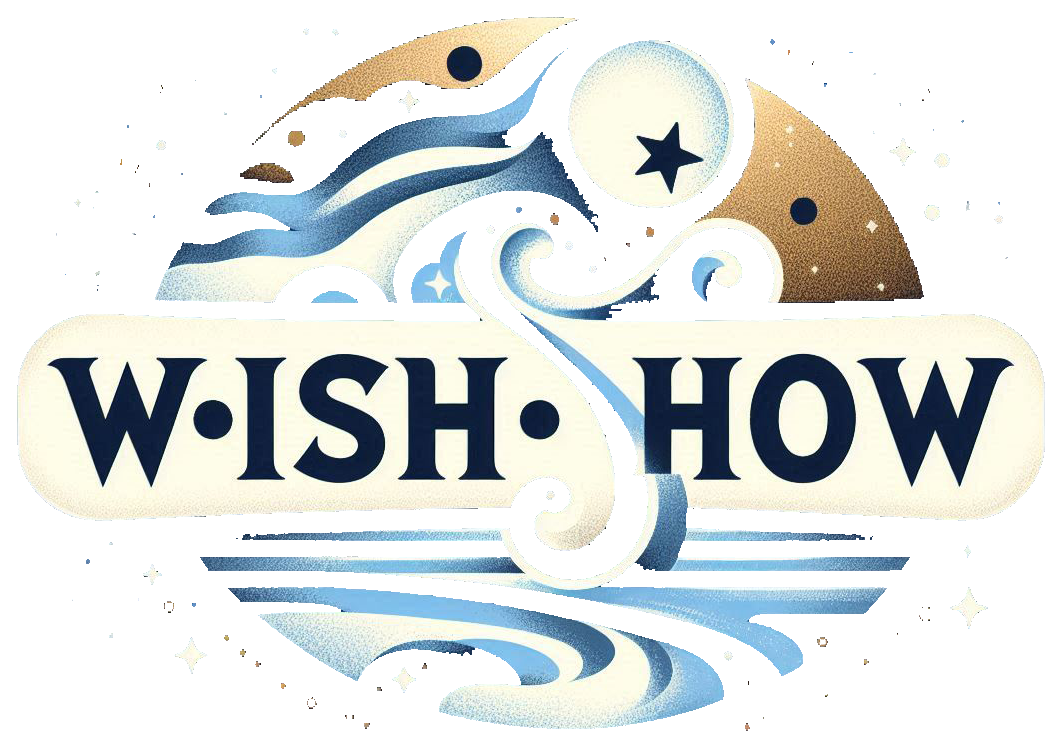For centuries, people all over the world have used visualization, meditation, and prayer in different ways. But let’s be honest—visualization sometimes gets labeled as “woo-woo” or mystical, like it’s not grounded in reality.
Here’s the thing: you don’t have to be spiritual to see the benefits of visualization. Psychologists have studied it to understand how it works, and today, everyone from top athletes to CEOs is using these techniques to improve their performance and focus.
So, what exactly is visualization, and why does it matter? Let’s break it down and explore some simple techniques you can try for yourself.
What is Visualization?
Visualization is all about picturing what you want to achieve in the future, as if it’s already happening right now.

It’s not just about seeing it in your mind—you bring all your senses into play. Imagine the sights, smells, touches, tastes, and sounds of your goal. This practice trains your subconscious to focus on your end goal and keeps it fresh in your mind every day.
It also helps your brain act like that outcome is already real, shaping your thoughts and actions to make it happen.
There are two main types of visualization:
- Outcome Visualization: This is where you imagine the final result you want to achieve.
- Process Visualization: Here, you focus on every step you’ll take to get there, engaging all your senses along the way.
When you combine both techniques, you can get the best results!
Why is Visualizing Important?
We live in a world where we’re constantly bombarded with digital noise—endless news, entertainment, and remote work just a click away. It’s no wonder we get distracted so easily.
Sometimes, it feels like there aren’t enough hours in the day. All you really want is some time to step back and focus on what truly matters to you.

In his talk Unleash Your Super Brain to Learn Faster, Jim Kwik shares an interesting metaphor: you can either be a thermostat or a thermometer. A thermometer reacts to its surroundings, while a thermostat sets the temperature and creates the ideal environment.
That’s where visualization comes in. It’s a powerful tool that helps you set the tone for your life and turn your future goals into reality.
With creative visualization, you train your brain to focus on what’s most important through a process called selective attention. Ever notice how, after buying a new car, you suddenly see that same car everywhere? That’s selective attention in action—we tend to see what we focus on.
The same principle applies to our goals. When you focus on something and take deliberate steps toward it, you’re more likely to make it happen—whether it’s positive or negative.
Think about a time when you imagined the worst-case scenario, felt all the fear that came with it, and then it actually happened. Now imagine flipping that mindset—visualizing the best possible outcome instead, with all the joy and sensory details.
This idea is rooted in cognitive behavior theory, which says that thoughts come before actions. Visualization takes it a step further. By vividly imagining your future with all your senses, your brain starts to record it as if it’s already happening.
It’s not magic—it’s a way to set your mental thermostat for success.

What are Visualization Techniques for?
Visualization is a great tool to help you stay motivated and focused on your ideal future. It can also boost your confidence.

Picture yourself giving a presentation to a big audience, feeling proud as they erupt into applause. By imagining it so clearly, you’re more likely to believe it’s possible—and take the steps to make it happen.
Visualization works as a kind of mental rehearsal too. When you use process visualization, you train your mind to focus on the details and fine-tune your actions before you even take the stage. It’s like programming your brain to follow the plan you’ve envisioned. You can even use this technique to map out long-term goals, like a 5-year plan.
It’s also a powerful way to reduce anxiety. Visualization shifts your attention back to the positive details of what you want to achieve, helping you tune out distractions and focus on what really matters.
How do you Visualize What You Want?
Before diving into visualization, it’s important to do a little prep work.
A great starting point is the Balance Wheel exercise. Take a moment to reflect on different areas of your life—family, career, health, relationships—and check how satisfied you are with each. Is your life balanced, or are there areas that need more attention?

Next, get clear on your core values—the things that guide your decisions like a personal North Star. Do you value family, career, and financial stability? Or maybe it’s freedom, travel, and adventure? Think about how these values shape your choices and priorities.
Then, spend some time on positive thinking with an exercise like Best Possible Self. Reflect on who you dreamed of becoming as a child. How does that compare to who you are today? Are you similar, or have your goals shifted?
Also, think back to a time when you felt energized and alive. What made that moment special? What mattered most about it?
Now, take that spark and imagine your ideal future. Picture it vividly—where are you? What are you doing? Who’s with you? How do you feel? What do you smell, taste, and hear? Try to capture that same sense of excitement and emotional intensity.
The key is to believe in the possibility of your vision. If you believe it’s achievable, you’ll take steps to make it real. If you don’t, it won’t happen.
Once you’ve identified what truly matters to you and why, you’re ready to start practicing visualization!

Does Visualization Really Work?
If you Google “visualization,” you’ll see stories of top athletes who’ve mastered the art of putting mind over matter to reach their goals.
They focus on key movements and outcomes long before stepping into the spotlight. Take, for example:
- Alex Honnold, the legendary Free Solo climber
- LeBron James, NBA superstar
- Michael Phelps, the swimmer with 28 Olympic medals
- Greg Louganis, multi-gold medalist diver
- Former Navy SEALs like David Goggins and Jocko Willink

These individuals know that mental training is just as vital as physical training.
Visualization isn’t just for athletes—it’s helped stroke victims tap into neuroplasticity to rewire their brains. Simply imagining an action can activate the brain in a way similar to actually doing it.
You can see visualization in action in the Netflix series The Queen’s Gambit. Chess prodigy Beth Harmon rises to the top by studying every chess move she can, practicing relentlessly, and visualizing her matches each night. She immerses herself in the game so deeply that she imagines each move with all her senses.
Or think of a dancer preparing backstage, rehearsing her steps in her mind while subtly marking movements with her feet and arms. After performing, she reviews the judges’ feedback, refines her technique, and practices again—both physically and mentally—repeating the cycle until it’s perfect.
Have you ever imagined a goal so vividly that you could see every step you needed to take? Then you made it happen, just as you pictured it?
That wasn’t wishful thinking. It was your focused desire guiding your thoughts, actions, and even your brain’s pathways toward the outcome you envisioned. Visualization works because it aligns your mind, body, and actions with what you truly want.
How do you Practice Visualization? 5 steps
Here are five simple steps to kickstart your visualization practice:

- Write Down Your Goal in Detail
Describe exactly what you want, using all five senses. Picture it vividly—what does it look, sound, smell, feel, and even taste like? The more sensory details you include, the more real it will feel, and the more motivated you’ll be to make it happen. - Feel the Emotions
Imagine how you’ll feel when you achieve your goal. Excited? Proud? Fulfilled? The stronger the emotional connection, the more you’ll believe in your ability to succeed and take action to get there. - Take Daily Action
Do something every day to move closer to your goal, no matter how small. Setbacks will happen—it’s normal. When they do, close your eyes and visualize how you’ll overcome them and keep moving forward. - Expand Your Knowledge
If you need more information to reach your goal, seek it out! Research online, talk to experts, or take a class. Use what you learn to refine your vision and plan the steps you need to take. - Commit to Regular Visualization
Spend 10 minutes twice a day visualizing your goal. The best times are right after you wake up and just before bed. These moments help engage your subconscious mind and keep you focused.

To reinforce your practice:
- Close your eyes and imagine your goal as if it’s already true, with all the emotions and senses tied to it.
- Write your goal on an index card in the present tense (“I am living my dream life”) and read it every morning and night.
- Create a vision board filled with images that represent your goal and keep it somewhere you’ll see it daily, like next to your bed.
These simple steps can help bring your dreams closer to reality!
Visualization Techniques and Tools: Learn How to Practice Visualization
Learning how to visualize can feel a bit tricky at first, but with the right tools and techniques, it gets easier. Here are five simple ways to help you practice visualization effectively:

1. Create a Vision Board
A vision board is a collection of images and words that represent your goals and dreams. It’s like a visual reminder of what you’re working toward.
Place your board somewhere you’ll see it every day, like your bedroom or workspace. Seeing it regularly will keep you inspired and focused.
2. Try Guided Visualization Meditations
YouTube is packed with free guided meditations that can help you relax and focus on your goals. These interactive sessions walk you through imagery, giving your mind something clear to focus on while you visualize. It’s a great way to set aside time for yourself.
3. Use Index Cards
Remember using flashcards as a kid to study? Index cards work the same way for visualization.
Write down 10–20 goals you’re working on, one goal per card. Keep the stack near your bed.
Every morning and evening, go through the cards. Read each one, then close your eyes and imagine yourself achieving that goal.
4. Get Detailed in Your Visualization
The more specific you are, the more real your vision will feel.
For example, thinking about wanting pizza is one thing, but imagining its taste, smell, and feel makes it much more vivid.
Apply this idea to your goals. Picture every detail—what it looks like, how it feels, sounds, smells, even tastes if it applies. The clearer your vision, the stronger your brain’s focus becomes.
Also Read: What are the Key Lessons from Successful Manifestors?
5. Expose Yourself to Your Goals
Immerse yourself in experiences related to your goals to make them feel more real.
For example, if one of your dreams is to go skydiving, start by watching videos of people skydiving, reading their experiences, or talking to someone who’s done it. These exposures make the idea less abstract and more achievable.
Pick one of these techniques to try today. Visualization helps sharpen your focus and aligns your actions with your goals. It’s like setting the thermostat to create the perfect conditions for success!
Use Visualization to Achieve Your Goals
Visualization can be a powerful tool to help you make better decisions and get closer to the life you want.
It’s tough to work toward your goals if you don’t take the time to think about them clearly.
Set aside a little time to try the techniques we’ve talked about. They can give you practical steps to move forward and stay on track.

